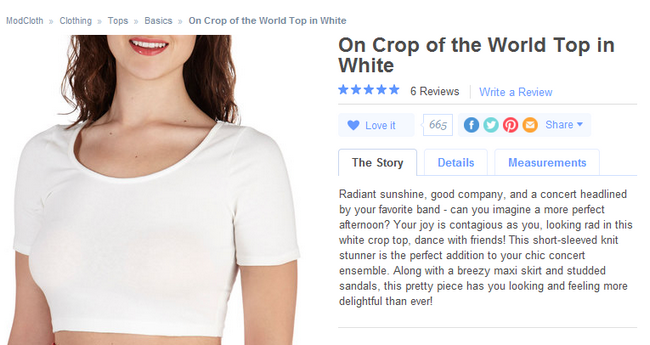In fashion, as in any other business, persuasive communication is the key to making establishing fruitful partnerships, driving sales, and building customer loyalty. Aimed at consumers, buyers and media, product descriptions are an important part of any label’s promotional strategy. Compelling, informative and inventive, they help convey the brand’s message as well as attract and retain clientele. And though not all of us are born writers, you don’t have to be Hemingway to create effective stories for your pieces. At least not with the 5 tips that we offer to help you add some impact to your product descriptions.
1. Talk to your audience
Before you start writing, think about your intended reader and tailor your message to their needs. It’s important to make a distinction between the two different audiences that your product descriptions are aimed at – the buyers, who will peruse your linesheet and lookbook, and work with forms, and final consumers – people who purchase your garments, follow your brand via social media, and shop at your online boutique.
The first category of readers will appreciate an informative description with little flowery language, while the latter group may be drawn to a more quirky or personable tone. One more thing to remember – once you find and establish your brand’s voice, stick to it.

Though this product description will be sufficient for an industry professional, it won't do much for a consumer
2. Be specific
Put yourself in the readers’ shoes and try to anticipate their questions. Do mention the structural or tailoring peculiarities, materials and fibers used, as well as available colors and sizes.
If your product description is meant for a linesheet, you might want to include technical details related to the way your piece is cut or produced. That way, when the buyer reviews your collection after an appointment, they won’t have to wonder whether there is a zipper or a hidden pocket in a particular piece. Also, it’s crucial that you make your style numbers logical and easy to remember.

A great example of an informative technical product description with the crucial elements that should be mentioned to make a buyer's job easier (via www.fashion-incubator.com)
However, if you’re writing for your label’s website or social media profile, take care not to overwhelm your audience with terms they will not understand.
3. Convey the value of the product
Put extra effort into translating features of your product into benefits. If the fabric composition accounts for easier care or fewer wrinkles – be sure to include this info. If the piece is designed to last longer due to a particular mode of manufacturing or a specific finish – go ahead and mention it.
When it comes to buyers, it is beneficial to communicate that a particular piece fits a certain context (day, casual, office, beach wear, etc.), highlighting its functionality. You could also provide a reference to the trend or inspiration it draws upon, but only if the product description is meant for the lookbook.
If your message is aimed at the final consumer, use enthralling nouns, vivid verbs, and juicy adjectives to put your piece in context. Try to describe a situation where it could be worn. The folks at ModCloth do a great job at this. Consider how they present a basic white crop top (see the image below):
4. Use consistent structure
Depending on your audience, you could start with a silhouette description or a tongue-in-cheek comment, and then proceed with fabric composition details or a feature-to-benefit statement. Either way, a consistent structure will help your readers easily identify information that interests them most. Just be sure to keep the messages concise. Also, for immediate impact, list the details of greatest importance upfront.

This linesheet is concise, informative and uniformly structured - hence, easy to read
5. Don’t recycle
This piece of advice is applicable to the product descriptions that final consumers will see, particularly on your website. You’ve got to steer clear from using the same descriptive words or phrases over and over again. First off, recycling makes your descriptions unimaginative and bland, which can diminish the product’s unique appeal and confuse the customer. Secondly, it hurts your SEO. Only with unique and engaging content will you be able to boost your search rankings, website traffic, and get people to spend more time (and money) on your site.
Words give enormous power to those who know how to use them. And that stands true for product descriptions. Crafted with care, they will help you not only attract new customers and retailing partners, but also convert more leads into sales, on top of strengthening your label’s personality and promoting brand loyalty.




About The Author: BridgeShowroom
Since 2011, BRIDGE SHOWROOM has been representing Europe's finest designers in America.
We are partners, linking together retailers and designers.
More posts by BridgeShowroom